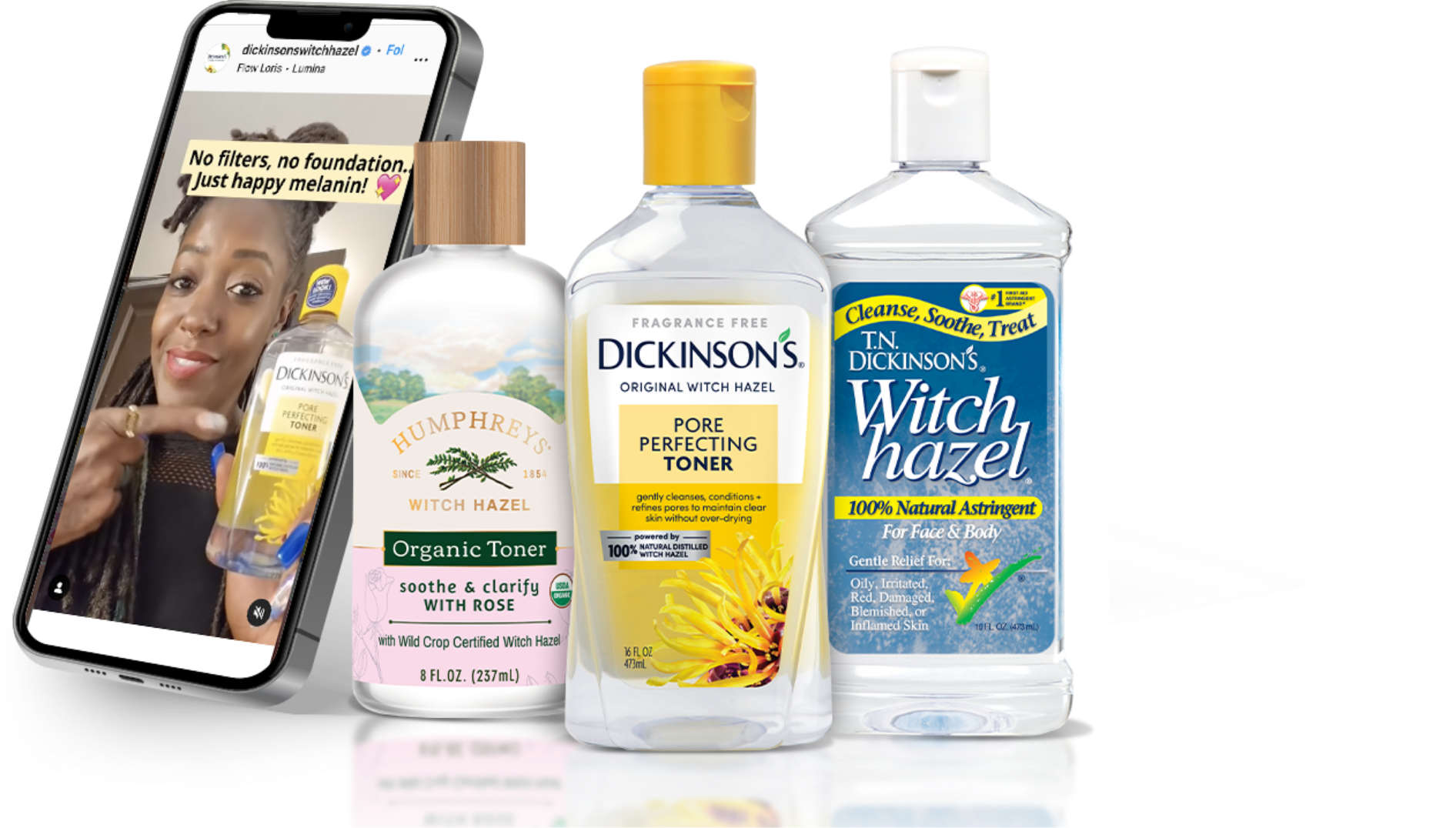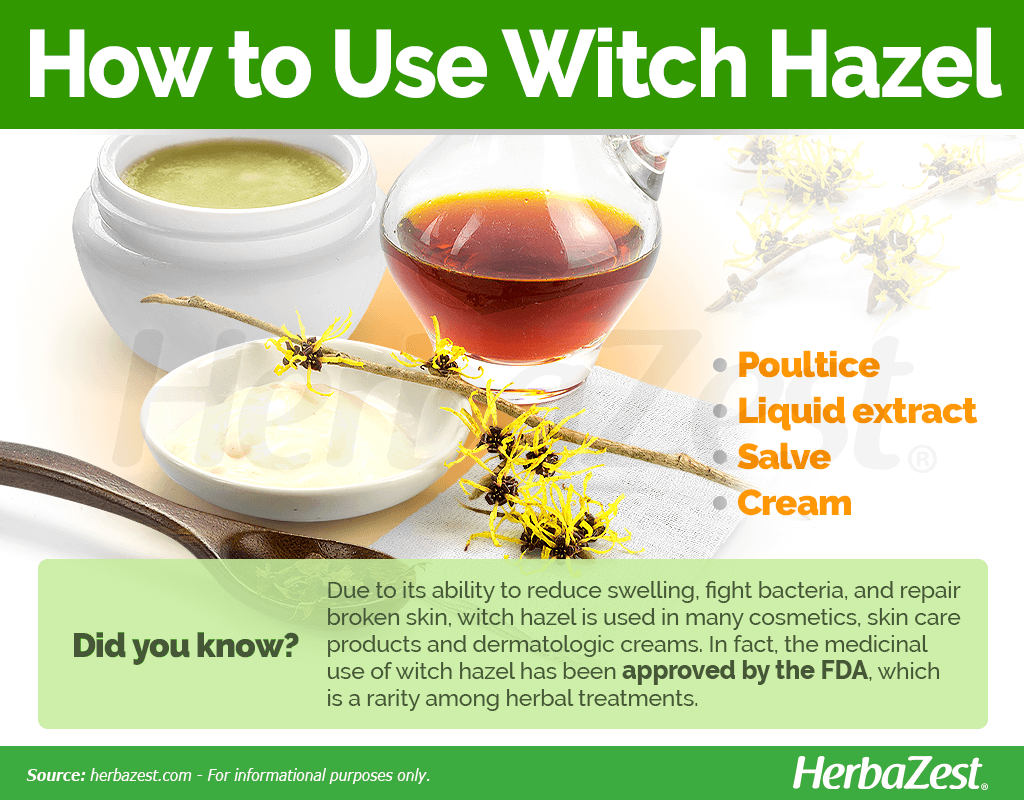Witch hazel is a popular natural remedy used for various skincare and health purposes. However, many people wonder whether witch hazel can go bad over time. If you're concerned about its shelf life, you're not alone. Understanding how to properly store witch hazel and recognizing signs of spoilage can help you make the most of this versatile product.
As one of the most widely used natural extracts, witch hazel offers numerous benefits for both skin and overall health. Its effectiveness in reducing inflammation, controlling acne, and soothing irritation has made it a staple in many households. However, like any other skincare product, witch hazel has a lifespan, and knowing how to maximize its longevity is crucial.
This article aims to provide a thorough explanation of witch hazel's shelf life, proper storage methods, and signs to look out for when determining whether your witch hazel has gone bad. Whether you're a skincare enthusiast or simply curious about this natural ingredient, this guide will equip you with the knowledge you need to use witch hazel safely and effectively.
Read also:Unveiling The Unique Traits Of May 8th Birthday Personality
Table of Contents
- What is the Shelf Life of Witch Hazel?
- How to Properly Store Witch Hazel
- Signs That Witch Hazel Has Gone Bad
- Different Types of Witch Hazel
- The Biological Composition of Witch Hazel
- Effects of Expired Witch Hazel on Skin
- Frequently Asked Questions About Witch Hazel
- Tips for Extending the Shelf Life of Witch Hazel
- Comparing Witch Hazel to Other Natural Extracts
- Conclusion
What is the Shelf Life of Witch Hazel?
Witch hazel, derived from the leaves and bark of the Hamamelis virginiana plant, is known for its stability and longevity. However, its shelf life depends on several factors, including its formulation and storage conditions. Typically, witch hazel can last anywhere from one to three years when stored properly.
Commercial witch hazel products often include preservatives, which extend their shelf life. If you're using pure, undiluted witch hazel, it may not last as long due to the absence of added chemicals. Always check the expiration date on the product packaging or consult the manufacturer for specific guidance.
Factors Affecting Shelf Life
The longevity of witch hazel can be influenced by:
- Preservatives: Products with added preservatives tend to last longer.
- Exposure to Air: Keeping the container tightly sealed helps prevent oxidation.
- Temperature: Extreme heat or cold can degrade the quality of witch hazel.
- Light: Exposure to direct sunlight can cause the product to break down faster.
How to Properly Store Witch Hazel
Proper storage is key to maintaining the quality and effectiveness of witch hazel. Here are some tips to ensure your witch hazel stays fresh for as long as possible:
Storage Tips
- Keep it Cool: Store witch hazel in a cool, dry place away from direct sunlight.
- Seal Tight: Always close the container securely after each use to prevent air exposure.
- Avoid Humidity: High humidity can lead to contamination, so avoid storing witch hazel in bathrooms or other damp areas.
- Use Dark Containers: If possible, choose products packaged in dark glass bottles to protect them from light degradation.
By following these storage guidelines, you can significantly extend the shelf life of your witch hazel and ensure its continued effectiveness.
Signs That Witch Hazel Has Gone Bad
While witch hazel is relatively stable, it can still spoil over time. Knowing the signs of spoilage can help you avoid using ineffective or potentially harmful products. Here's what to look for:
Read also:Is Bill Hemmer Married Discovering The Personal Life Of The Renowned Journalist
Visual and Olfactory Indicators
- Change in Color: If the witch hazel becomes cloudy or develops a different hue, it may be past its prime.
- Unusual Odor: A sour or off-putting smell is a clear sign that the product has gone bad.
- Separation: If the liquid separates or forms unusual deposits, it may no longer be safe to use.
If you notice any of these changes, it's best to discard the witch hazel and replace it with a fresh batch.
Different Types of Witch Hazel
Not all witch hazel products are created equal. Understanding the differences between various types can help you choose the right one for your needs.
Commercial vs. Natural Witch Hazel
Commercial witch hazel often contains alcohol and preservatives, which enhance its shelf life. On the other hand, natural, alcohol-free witch hazel may degrade faster but is preferred by those with sensitive skin. Consider your skin type and preferences when selecting a product.
Uses and Benefits
Witch hazel is versatile and can be used for:
- Soothing irritated skin
- Reducing acne and inflammation
- Treating minor cuts and bruises
- Minimizing puffiness and dark circles under the eyes
The Biological Composition of Witch Hazel
Witch hazel's effectiveness stems from its unique biological composition. It contains tannins, flavonoids, and other antioxidants that contribute to its healing properties. These compounds work together to reduce inflammation, fight bacteria, and promote skin health.
Research has shown that witch hazel can effectively inhibit the growth of certain bacteria and fungi, making it a valuable addition to skincare routines. However, its potency diminishes over time, emphasizing the importance of using fresh products.
Effects of Expired Witch Hazel on Skin
Using expired witch hazel can have adverse effects on your skin. When witch hazel goes bad, its active ingredients may degrade, reducing its effectiveness. In some cases, expired witch hazel can cause irritation, redness, or allergic reactions.
Potential Risks
- Skin Irritation: Expired products may contain harmful byproducts that can irritate the skin.
- Decreased Effectiveness: The potency of witch hazel diminishes over time, rendering it less effective.
- Allergic Reactions: Spoiled products can trigger allergic reactions in sensitive individuals.
To avoid these risks, always check the expiration date and inspect your witch hazel before use.
Frequently Asked Questions About Witch Hazel
Can Witch Hazel Be Used on Open Wounds?
While witch hazel is generally safe for minor cuts and scrapes, it's best to consult a healthcare professional before using it on open wounds. Its astringent properties can help clean and disinfect the area, but it may cause discomfort in some cases.
Is Witch Hazel Safe for Sensitive Skin?
Yes, witch hazel can be safe for sensitive skin, especially if you choose an alcohol-free version. However, it's always a good idea to perform a patch test before applying it to your face or other sensitive areas.
Can Witch Hazel Be Used Daily?
Using witch hazel daily is generally safe for most people, but it depends on your skin type. Those with very dry or sensitive skin may want to limit its use to avoid over-drying.
Tips for Extending the Shelf Life of Witch Hazel
Here are some additional tips to help you get the most out of your witch hazel:
- Buy in Small Quantities: Purchase only what you need to reduce the risk of spoilage.
- Refrigerate if Necessary: For extra protection, consider storing witch hazel in the refrigerator, especially if you live in a hot climate.
- Avoid Cross-Contamination: Use clean applicators or cotton pads to apply witch hazel and avoid dipping your fingers into the bottle.
By following these tips, you can ensure that your witch hazel remains effective and safe to use for as long as possible.
Comparing Witch Hazel to Other Natural Extracts
While witch hazel is a popular choice for skincare, it's worth comparing it to other natural extracts to determine which is best for your needs.
Witch Hazel vs. Aloe Vera
Both witch hazel and aloe vera offer soothing properties, but they differ in their applications. Witch hazel is better suited for oily or acne-prone skin, while aloe vera is ideal for dry or sunburned skin.
Witch Hazel vs. Tea Tree Oil
Tea tree oil is another powerful natural remedy, known for its antimicrobial properties. However, it is more potent than witch hazel and should be diluted before use. Witch hazel, on the other hand, can be used undiluted for most applications.
Conclusion
In conclusion, witch hazel is a versatile and effective natural remedy, but it does have a shelf life. Proper storage and regular inspection can help you maximize its longevity and ensure its continued effectiveness. Remember to check for signs of spoilage and replace your witch hazel when necessary.
We encourage you to share this article with others who may benefit from it. If you have any questions or comments, feel free to leave them below. For more information on skincare and natural remedies, explore our other articles and resources.


